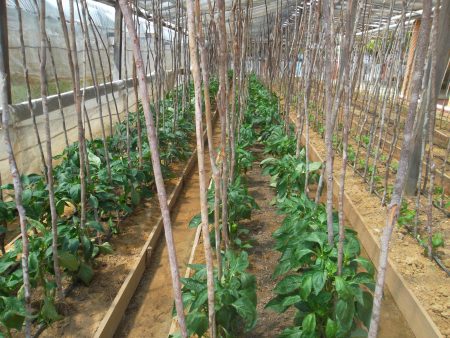As the requirements of domestic food security and the need to maximize opportunities to consolidate international market share place increasing demands on Guyana’s agricultural sector, the National Agricultural Research and Extension Institute (NAREI) is focusing increasing attention on the development and transfer of appropriate technologies ”to promote balanced, diversified and sustained agricultural production” and doing more to promote hinterland agricultural development, according to the Institute’s 2016 Annual Report.
In its report NAREI says that its application of “appropriate technologies” has been concentrated in the area of diversification initiatives aimed at evaluating new named crop options including red creole onion, Irish potato and watermelon. NAREI says in its 2016 report that its scientific work has also focused on improving the production and productivity of other named crops including hot peppers and cassava and the expansion and the introduction of Black Sigatoka-resistant plantain cultivars.

NAREI has also been reporting on its collaboration with the World University Service of Canada – Promotion of Regional Opportunities for Produce through Enterprises and Linkages (WUSC-PROPEL) on work being done to identify agro-ecological areas in Guyana suitable for the production of potatoes and the introduction of a number of varieties of potato seed in “observational trials in thirteen areas of the country. The report says that whilst inclement weather precluded harvesting in several areas the best results were realized at Kato and Paruima. NAREI says that work with potato cultivation this year will seek to identify areas not prone to flooding.
And as part of its focus on consolidating the range of crops available for both local consumption and export, NAREI says that it has also been seeking to apply technology to its efforts to improve the production and productivity of hot peppers, sweet potato and cassava. The report says that improved production practices “utilizing plastic mulch and drip irrigation,” as against the conventional practices utilized by farmers resulted in more than double the yields realized utilizing the conventional methods. NAREI says that it will be seeking to promote the successfully tried methods through its extension services.
Meanwhile, with experiments delivering increasing culinary options for the use of cassava, the Institute says that during last year it conducted two separate sets of studies in pursuit of the enhancement of production of the crop involving irrigation+biostimulants+fertilization. It says that when compared with conventional farmers’ practices the new methods were found to increase yield by up to twenty-six per cent.
NAREI says that during last year the cultivation of spices “was an ongoing activity in Region One” with an additional ten farmers being provided with 11.360 kg of turmeric planting materials and 3,900 black pepper seedlings for cultivation.
NAREI says, meanwhile, in its 2016 Annual Report that during last year it sought to further intensify the promotion of “green technologies” in the country’s agricultural sector through methods that included soil sterilization, new management strategies for managing the leaf-cutting ant and the use of organic extracts and non-chemical weed control methods. The Institute says that its work in 2016 also placed greater emphasis on the use of newer fungicides and Integrated Pest Management (IPM) practices for managing the dreaded Black Sigatoka disease that had previously ravaged local plantain and banana crops.
Mindful of the earlier devastating effects of the Black Sigatoka Disease (BSD), NAREI said in its report that during last year it had utilized “newer fungicide chemistry” for the control of the disease along with Integrated Pest Management practices with the aim of using minimal spray application and increase yield potentials.
Meanwhile, the scientific work of the Institute during 2016 included soil sterilization initiatives designed to evaluate the effects of steam sterilization for the control of soil-borne pathogens and according to the report such pathogens were “totally absent” after sterilization.





